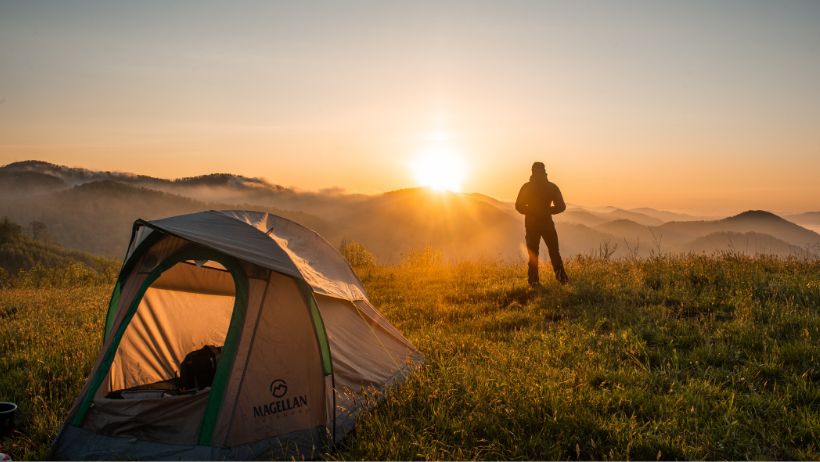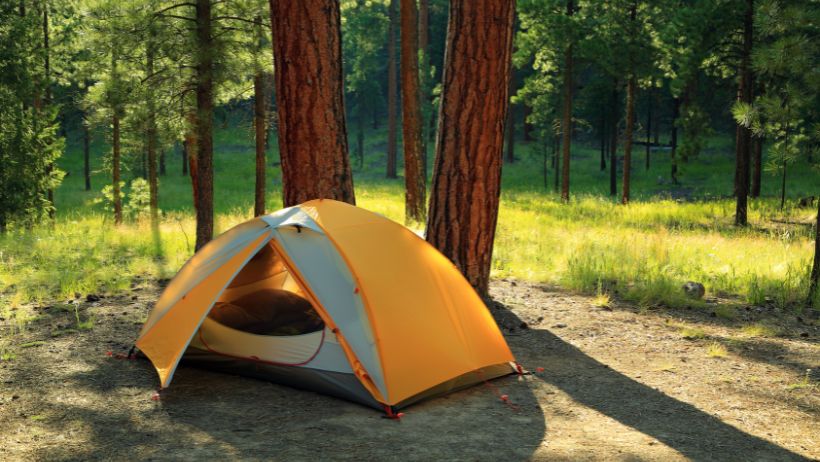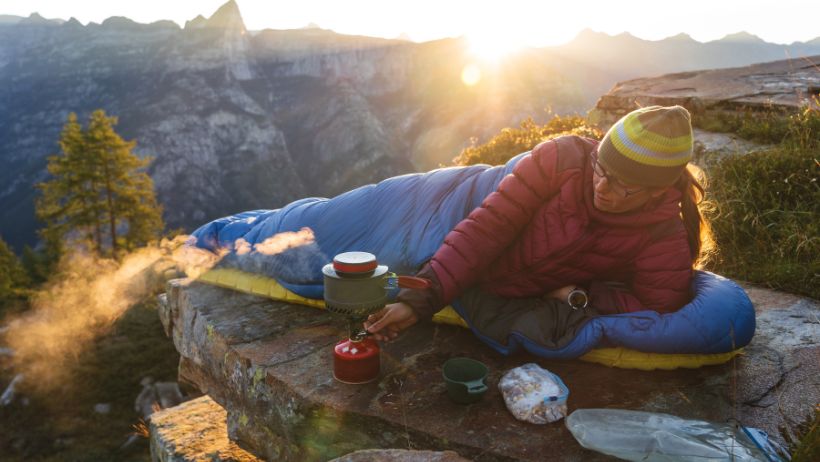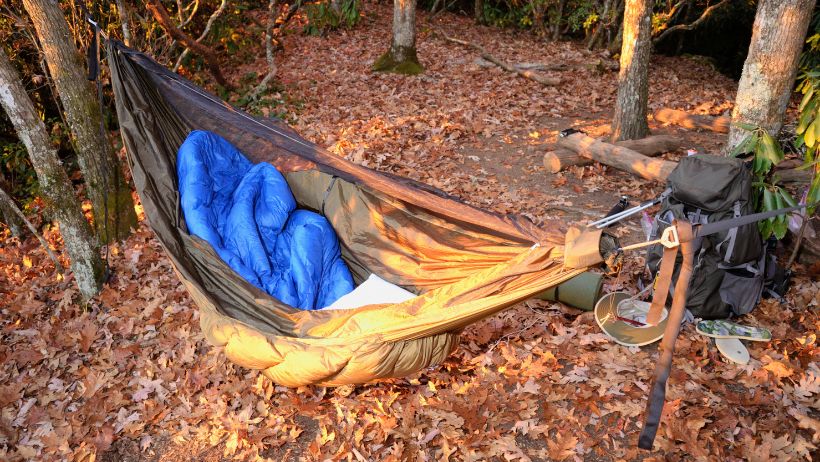Set up camp – The ultimate guide to sleeping outdoors
When we go on longer trips and adventures that last several days, we frequently have to spend the night outside. Setting up camp in the wilderness – There are several options and accommodations for this. What do you bring, and what does the ideal place to stay look like? This post will reveal all!
Tents, bivouacs, and other forms of overnight camping accommodation
We are spoiled for choice when it comes to lodging. Because overnight stays are never the same, particularly in the wilderness, each trip, expedition, and adventure places unique demands on a well-equipped camp for the night. It would help to decide whether you require basic accommodation with adequate space and comfort or whether the emergency bivouac will suffice.
The tent
The tent is the ideal companion for all multi-day outdoor excursions! It doesn’t matter if it’s cold in winter, hot in summer, in a storm, rain, or for an overnight stay while mountaineering: none of this is a problem with the right tent! In almost all weather conditions, the right tent in the right situation can protect us.
However, when we sacrifice simplicity and flexibility to specialize, we are spoiled for choice: single-walled or double-walled, large or small, cheap and slightly heavier or expensive ultralight tent.
There are certainly all-rounder solutions here that are adequate for weekend trips and tours in a moderate climate and don’t burn a hole in your wallet. However, choosing a tent that meets the specific requirements makes sense if you are going on a long-distance or mountain tour.
After you’ve decided on a model, it’s a good idea to set up and take down the tent in the garden before the tour. This eliminates the need to practice in the dark or potentially inclement weather.
Advantages
- Universally applicable
- safe accommodation in almost any weather
- different models for all possible situations
Disadvantages
- increased weight
- possibly expensive to purchase
- Setup may take some time
The bivouac
A bivouac is a night camp without a tent, usually consisting of a sleeping bag, air mattress, or a bivouac sack. Sleeping under the stars is an unforgettable experience, especially in the summer and on clear nights!
When we decide on a bivouac, we also decide on an authentic outdoor experience! We expose ourselves to the elements and get close and personal with nature. The bivouac has many obvious advantages: it saves weight and a lot of space in the backpack, and it’s quick and easy to put together. Unpack the sleeping bag and spread out the air mattress or sleeping mat. In some cases, camping is prohibited, but an (emergency) bivouac is permitted. This applies, for example, to alpine terrain if the refuge or the end of a tour cannot be reached on the same day, for instance, due to exhaustion.
Anyone considering a bivouac should practice at home in the garden first. Perhaps the sleeping bag is too cold or gets damp in the morning from dew. A bivouac sack can be helpful in this situation. This is the sleeping bag cover.
Falling asleep under the open sky on a starry night can be a magical experience. However, I would prefer a tent to a bivouac in many situations. You don’t sleep well during thunderstorms without a roof (or tarpaulin) over your head.
Advantages
- Easy
- Easy to set up
- Cheap
Disadvantages
- Good weather is a prerequisite – wrong with temperature fluctuations and weather changes,
- Moisture (morning dew) can penetrate the sleeping bag
The tarp
A tarp is essentially nothing more than a lightweight tarpaulin that is set up with the help of a few lines and hiking poles, for example. As a result, the tarp is a bridge between a tent and a bivouac—a minimalist form of camping.
Camping couldn’t be more accessible: two hiking poles hammered into the ground, with a tarp, stretched over them. Ropes are used to secure the frame to trees or a few pegs. As a waterproof roof, the tarp provides rain protection and keeps the adventurer and his equipment dry.
It is simple to erect and provides shelter for a lunch break in inclement weather. You are well served with a tarp if you are primarily protected from strong winds, the rain does not come from the side, and you consider mosquito spray if necessary.
It can also be used as a tent canopy or with a bivy sack to increase storage space.
Advantages
- Cheap
- Simple structure
- lightweight and space-saving
Disadvantages
- only limited protection against extreme weather situations
- no protection against insects
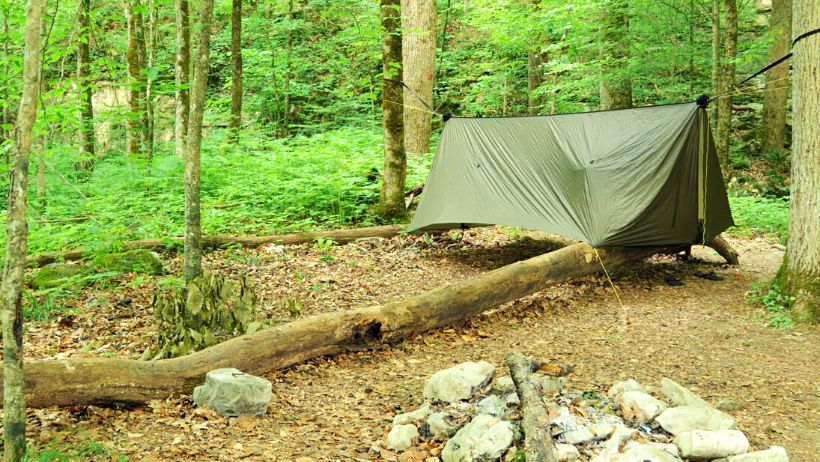
The hammock
A hammock is more similar to a beach vacation on a tropical island than a camping trip. However, the hammock has more benefits than you might think. And when it comes to comfort, it is hard to beat! Good luck finding a more relaxed camping experience.
Aside from comfort, the hammock excels in one area: insulation! Because we lose the majority of our body heat through the ground when we sleep outside. This method will keep you surprisingly warm if you’re dangling in a hammock with a suitable sleeping bag.
Setup can be complicated, and a few sturdy trees spaced appropriately apart are necessary. For obvious reasons, this method is not recommended in bad weather or even a storm.
Advantages
- Comfortable
- isolation from the ground
- Protection against insects and small animals living on the ground
Disadvantages
- Setup may be difficult
- not applicable everywhere
- no protection from rain and wind
Survival/Bushcraft Camp
Setting up camp for the night is the ultimate challenge for any adventurer! Bushcraft is the study and mastery of wilderness survival skills and techniques using only the bare necessities. Here, emergency shelters are frequently constructed with nothing more than a knife!
The ability to set up a camp on your own in an emergency is remarkable, and it can mean the difference between life and death in life-threatening situations. If you get lost while touring in remote parts of the world, you must be able to provide yourself with the bare necessities, which include setting up a simple camp.
Learning these outdoor skills is also enjoyable because they allow you to be creative. There are no rules, and the possibilities are limitless.
Advantages
- Cheap
- Flexible
- Self-made
Disadvantages
- Requires experience and lots of practice
- It may take a lot of time
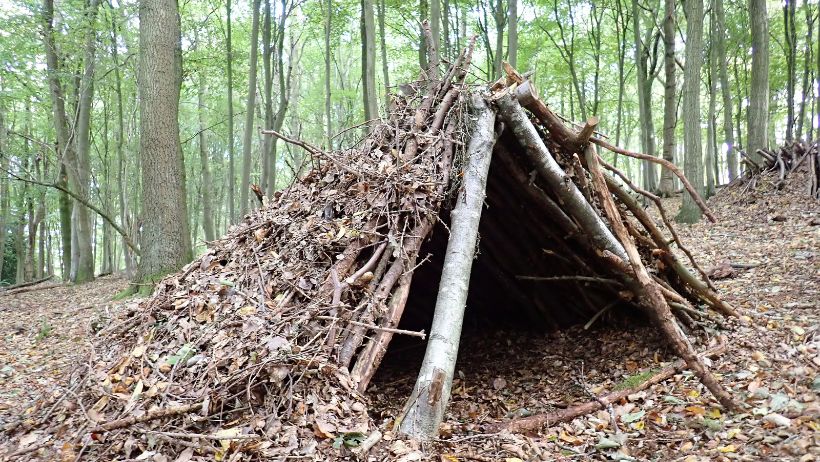
Choose the best storage location
When we set up camp in the great outdoors, we want to protect ourselves from environmental influences like wind and weather as much as possible. Strong winds, rain, snow, or sweltering heat can make camping unpleasant. However, there are a few ways to protect yourself from it, including the proper equipment and careful planning. We could save ourselves a rude awakening in the middle of the night if we carefully consider where and how we set up our camp!

